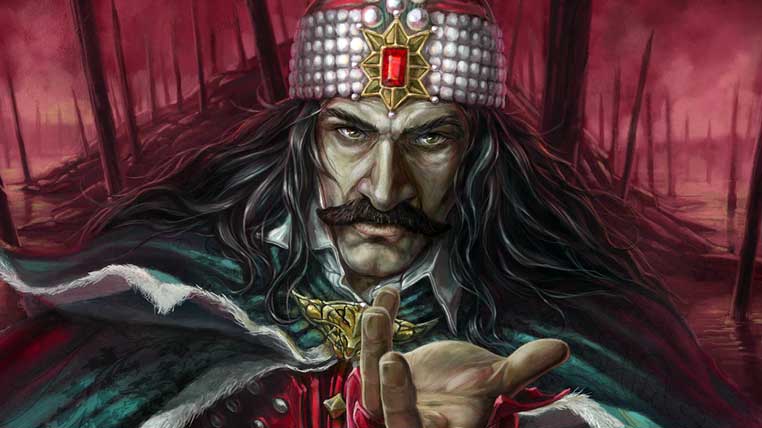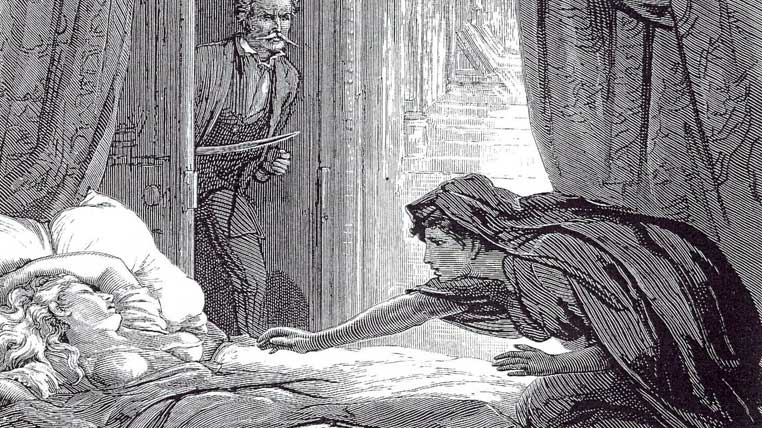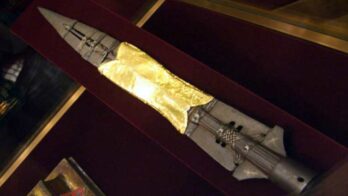However, a longstanding debate persists over whether this infamous character was inspired by the Romanian ruler Vlad the Impaler. Recently, several theories have emerged that challenge this association.
In the summer of 1997, members of the Transylvania-Dracula Society convened in Los Angeles, USA, to engage in a lively discussion about “vampirism.”
This event not only rekindled the age-old dilemma surrounding the potential influence of Vlad the Impaler on Bram Stoker’s literary masterpiece but also spurred newer hypotheses about the origins of the Count.
It has been posited that the British author Abraham Stoker drew inspiration for his novel from sources entirely unrelated to Transylvania or Vlad the Impaler.
If this holds true, then who or what served as the inspiration for the iconic character of Dracula? Might there be another enigmatic individual whose life story provided fodder for the infamous Count Dracula?
The Golden Dawn Society: an enigmatic order
Wilkinson, a British consul in the Romanian Principalities in 1822, chronicled his travels and made derogatory remarks about Vlad the Impaler, thereby becoming one of Bram Stoker’s sources for his novel “Dracula.”
Radu Florescu, a Romanian medieval history expert residing in the United States, stumbled upon a series of notes belonging to Stoker in a Philadelphia archive.
These notes affirmed the hypothesis that the author’s two primary sources for the novel were Wilkinson’s travel journal and another by Emily Gerard, titled “The Land Beyond the Forest,” which also dealt with the vampire theme.
Inspired by these journals, Stoker crafted “The Essential Dracula,” a work in which he combined various vampire myths and elements of local folklore, history, and geography.
Despite its unprecedented success, some specialists maintain that Stoker’s novel can be considered plagiarism.
Bram Stoker was a member of the Golden Dawn Lodge in London when he wrote Dracula. Founded in 1887, the Golden Dawn Society was initially led by William R. Woodman and had several hundred members, including prominent figures of the Victorian era.
Among its members were William B. Yeats, the renowned actress Florence Farr, author Arthur Machen, J. W. Brodie-Innes, Algernon Blackwood, Sax Rohmer, Talbot Mundy, Charles Williams, Allan Bennet, Aleister Crowley, and Bram Stoker himself.
The society’s organizer, S. Liddell Mathers, was an occultism enthusiast who dedicated himself to researching ancient manuscripts in libraries, including the texts of Abramelin the Mage, which he translated.
Mathers was so engrossed in old Celtic traditions that he called himself Mac Gregar, Count of Elenstrae. Eventually, Mathers relinquished the order’s leadership to Yeats, who proved less authoritarian.
The writers affiliated with the Golden Dawn Order shared a common interest in beings or traditions from the pre-Celtic world. They found the magical practices they conducted to be effective.
For example, Arthur Machen, Sax Rohmer, and Bram Stoker incorporated black magic and occultism elements in their work, creating a new kind of fantasy populated with monsters.
Mathers claimed to have encountered blood-addicted vampires in London, and some speculate that these peculiar encounters may have inspired Stoker’s vampire myth.
Bram Stoker's life
Bram Stoker, the renowned author of the Gothic horror novel Dracula, was born in November 1847 in Dublin, Ireland.
He was named after his father, Abraham, a minor official at the Office of the Chief Secretary of Dublin Castle. However, his intimates and friends often referred to Stoker by his nickname, Bram.
Stoker’s mother, Charlotte Matilda, was the daughter of a captain named Thornley. Bram Stoker’s childhood was plagued by ill health, and he spent much of his first eight years confined to his bed.
His education was entrusted to Pastor William Woods, who ran a private school in Dublin and provided instruction to Stoker until he was sixteen.
Stoker’s mother was a significant influence in his early years, often regaling him with Irish fairy tales and horror stories that invoked memories of the cholera epidemic of 1832.
In 1864, Bram Stoker enrolled at Trinity College in Dublin, where he showed an apparent inclination toward literature and theater to the detriment of his studies geared towards a career in the civil service.
As a theater enthusiast, Stoker regularly attended performances at the Royal Theatre, where he was particularly impressed by the performance of the renowned actor of the time, Henry Irving, in “The Rivals.”
Stoker continued to follow Irving’s performances and was in the audience, along with teenager George Bernard Shaw, when Irving returned to the stage in “Two Roses.”
Under the spell of Irving’s acting, the two young men decided to become theater critics. Consequently, in November 1871, Stoker wrote his first article, published in the Dublin Mail.
Stoker was preoccupied with two issues: his boundless admiration for Henry Irving and the problem of vampirism. He followed Irving’s performances and continued to write articles on theater.
In the winter of 1876, Irving played the role of Eugene Aram, which fascinated Stoker, and he began working for the famous actor.
However, after two years, unable to fulfill both his role as Irving’s private secretary and his position as a civil servant in the Irish Public Service, he decided to resign and move to London with his young wife, Florence Anne Lemon Balcombe.
Irving had recently taken over the Lyceum Theatre, and Stoker worked as his private secretary for 27 years, a period he would later describe in his book “Personal Reminiscences of Henry Irving.”
Stoker held Irving in high esteem and saw him as a mentor and friend. In his free time, Stoker pursued his interest in the occult and everything related to vampirism, which he would later channel into his iconic novel, Dracula.
It is worth noting that the realistic Gothic novel emerged during this period, combining horror and mystery masterfully.

The realistic gothic novel
At a mere 18 years old, Mary Shelley penned “Frankenstein,” a tale of a mad scientist who attempted to surpass the laws of nature. The researcher succeeded in creating a monster that ultimately destroyed its own creator.
Lord Byron, a member of Mary Shelley’s circle, was envious of her success with “Frankenstein” and attempted to craft a story about a vampire in Geneva.
While the novel remained unfinished, it addressed the theme of the vampire in literature for the first time. Other writers, some more obscure than others, later took up this theme.
Polidori (1795-1821), a young Englishman of Italian origin, who was only 20 years old and a former medical student at the University of Edinburgh, heard of Byron’s unfinished idea and created a story entitled “The Vampyre” based on it.
Although published in 1819 in the New Monthly Magazine under Byron’s name due to an editor’s misunderstanding, Polidori’s story did not receive public acclaim, leading the young man to become so despondent that he committed suicide two years later after failing in both medicine and literature.
However, Polidori’s story did not go unnoticed; it caught the attention of Bram Stoker.
Stoker read it, and Goethe appreciated it as the best thing Byron had ever written. In turn, Goethe explored the theme of vampires in “Brant Von Korinth,” published in 1797.
Other writers also delved into the vampire theme in their works. Alexandre Dumas père composed a drama titled “Le Vampire.”
The Frenchman Nodier also wrote a novel with the same title in 1820, which J. R. Planche translated into English. In 1830, the same J. R. Planche published the melodrama “The Vampire in Baltimore.”
In 1820, Irish priest Robert Maturin published the story “Melmoth the Wanderer.” The main character is a combination of a nomadic Jew and a vampire.
The vampire appears during a wedding celebration, terrifying the participants, who flee in all directions. Shortly after, the bride dies under mysterious circumstances, and the groom becomes insane, which could have been the vampire’s revenge.
The vampire theme achieved significant popularity with the publication of “Varney the Vampire or The Feast of Blood” by Thomas Preskett Prest in 1874. The author conducted serious research, delving into the legends of vampires in great detail.
The novel takes place during the reign of George II. The Bannesworth family confronts Sir Francis Varney, who sucks the blood from Flore Bannesworth’s neck.
Varney is portrayed as a contradictory figure, pushed to evil by an implacable destiny. After multiple unsuccessful attempts to save himself, he ultimately commits suicide by hurling himself into the crater of Mount Vesuvius.

Vlad the Impaler, son of Vad Dracul
In Bram Stoker’s iconic novel, Count Dracula is depicted as a vampire who feeds on young women’s blood and dwells in a castle somewhere in the Carpathian Mountains between Transylvania and Moldova.
This formidable character poses a real threat to all who live in proximity to his lair.
However, the origins of Count Dracula are not solely fictional.
Through their research into old chronicles, maps, and contemporary writings about Dracula, as well as historical and philological works from the 19th century, and Romanian folklore and traditions, scholars Radu Florescu and Raymond T. McNally have uncovered a dual history.
This narrative pertains not only to the 15th-century ruler of Wallachia, Vlad the Impaler, but also to the vampire who animated the legends of the same regions.
The authors explore how Stoker blended these two sources to create the most frightening and celebrated vampire in all of fiction: Count Dracula.
But how did Stoker come to identify Vlad the Impaler, a mortal ruler who lived from 1431 to 1476, with a bloodthirsty vampire who feasts on human blood?
Moreover, it is worth noting that Count Dracula is connected to an ancient Hungarian lineage that can be traced back to Attila the Hun.
Who was Vlad the Impaler?
Vlad the Impaler, a 15th-century ruler of Wallachia, has long fascinated historians and writers alike.
The name “Dracula” is derived from his father’s association with the Order of the Dragon, a chivalric order established to protect Christianity from the Ottoman Turks and to foster loyalty to the Holy Roman Emperor Sigismund of Luxembourg.
Vlad II, also known as “Dracul” or “dragon,” was a member of this order, and his son Vlad III would later become known as “Dracula,” or “son of the dragon.”
The Drăculești family, to which Vlad the Impaler belonged, were bound by the order’s oath to fight against the Turks and to claim the throne of Wallachia.
This investiture made them powerful contenders to the throne, which was then occupied by Alexandru Aldea, the half-brother of Vlad Dracul.
However, there is some disagreement among historians as to whether the Order of the Dragon was transferable. Despite not being a direct member, Vlad the Impaler’s continued use of the order’s garments and medal may have contributed to his eventual demise.
Bram Stoker, the author of the novel “Dracula,” never actually visited Transylvania or Romania, but instead drew inspiration from historical accounts of Vlad the Impaler.
Stoker was particularly fascinated by Vlad’s reputation for brutality, such as his penchant for impaling his enemies, and incorporated these elements into his fictional character of Dracula.

Count Dracula
Count Dracula is a legendary character in Bram Stoker’s famous novel of the same name. Stoker was meticulous in his research for the book, drawing on various sources to give his work an air of credibility.
One of the sources he used was the work of Sir Richard Burton, an orientalist who had translated several vampire stories in 1870. These stories were drawn from Hindu sources and would have provided Stoker with a rich vein of material to work with.
Stoker was also influenced by the infamous Jack the Ripper, who terrorized London from August to November 1888.
The idea that Jack the Ripper might have been a vampire was one of the many fanciful suppositions that were put forth at the time.
Bram Stoker was also influenced by Sabine Baring-Gould’s book, “The Book of Werewolves,” which contained the first complete English-language account of the famous Countess Elizabeth Bathory.
He used numerous notes from this book in his novel, including the physical description of Count Dracula, which drew heavily on Baring-Gould’s presentation of people who could transform into wolves.
They were described as having thin hands, nails with long points, and hair growing on the palms. This physical resemblance between vampires and werewolves, often established in folklore, was Stoker’s creation in the novel.
Stoker’s original manuscript for the novel contained a chapter that was entirely eliminated from the published version in 1897.
In this chapter, Jonathan Harker encounters a female vampire, Countess Dolingen, from Styria. This part of the book was taken almost entirely from Le Fanu’s novel “Carmilla.”
To avoid being accused of plagiarism, Stoker moved the action from Styria to Transylvania, with stories about this region and particularly the legend of Countess Bathory contributing to this decision.
Stoker may have read William Wilkinson’s book, “A Presentation of the Principalities of Wallachia and Moldavia,” which provides information about a historical figure renowned for his cunning and cruelty, who allegedly lived in Transylvania. Emil Gerard’s book, “Beyond the Forest,” 1888, also made a strong impression on Stoker.
Stoker met the Hungarian orientalist Arminius Vambery from the University of Budapest in London, and the two had discussions about the history of Hungary and Transylvania.
Under the influence of Vambery’s stories, Stoker presents Count Dracula as a nobleman of Hungarian origin from the Szekely family.
The origin of the Szekely family is a controversial issue, with some believing that they came to Transylvania with Attila’s Huns in the 5th century and others believing they are descendants of Hungarian border guards brought to eastern Transylvania by King Laszlo in the 12th century.
Regardless of their origins, it is widely accepted that the Szekelys are of Hungarian origin, not Romanian.
While Elizabeth Bathory was not the only starting point for the character of Count Dracula, her legend certainly played a significant role in Stoker’s vision of the character.
Stoker drew on a range of sources to create a rich and detailed portrait of his vampire antihero, and his novel remains a classic of horror literature to this day.

Carmilla of Styria: a pioneering vampire tale
The inception of vampire literature did not originate from Bram Stoker’s classic works alone. Preceding Stoker’s era, other writers explored this supernatural realm.
One of the renowned authors was Joseph Sheridan Le Fanu (1814-1873), a distinguished figure from Dublin who authored a short novel titled “Carmilla.” Le Fanu extensively researched the folklore of Eastern Europe, delving into occultism and vampire mythology.
Le Fanu discovered that when a sinner commits suicide, they can turn into a vampire, and their ghost haunts living people in their sleep, thereby transforming their victims into vampires.
Le Fanu’s attention to detail is noticeable in both “Carmilla” and “Dracula.” He wrote about how vampires do not decay when they sleep in coffins.
Instead, they retain their freshly deceased corpse’s appearance, their limbs remain flexible, and their skin maintains elasticity, with their cheeks retaining a natural flush.
Bram Stoker was inspired to write his novel about a vampire after reading “Carmilla.” But to comprehend the parallelism between the two books, we must first scrutinize the plot of “Carmilla.”
The novel was published in 1871, and the setting was in distant Styria, just like Stoker’s later works, where he picked the Carpathians and Transylvania as his settings.
The story revolves around Laura, the novel’s heroine, who meets the peculiar Countess Carmilla, also known as Mircalla, while staying in her father’s castle.
As the story unfolds, the two women become intimate friends, and their relationship gradually turns sexual. The Countess only appears at night, and Laura has nightmares about Carmilla from her childhood.
The story is well-crafted, that no one suspects the true identity of the beautiful Carmilla.
However, towards the end of the novel, it is revealed that the Countess is, in fact, a vampire and none other than Countess Mircalla Karnstein from an ancient and illustrious family in Styria.
In the chapel of the Karnstein castle, the tomb of Countess Mircalla is opened, revealing that Carmilla is the dead Countess who died 150 years ago, but her features remain intact.
Her eyes were wide open, and there was no smell of decay emanating from the coffin.
Following ancient customs, a wooden stake was driven through the vampire’s heart, and her head was severed. After that, her body and head were placed on a woodpile and burned to ashes.
Le Fanu’s novel was undoubtedly inspired by the history of Countess Bathory, and it indirectly contributed to the origin of Bram Stoker’s “Dracula.”
Stoker, like Le Fanu, drew elements from different sources, as evidenced in “The Essential Dracula.” Each part was taken from elsewhere, following his unique recipe.
Le Fanu’s “Carmilla” is an enthralling work that blends vampire folklore, mythology, and a captivating plot that holds the reader spellbound until the end. The novel has had a substantial influence on the vampire genre and continues to inspire writers and filmmakers even to this day.

Countess Elisabeth Bathory
Countess Elisabeth Bathory is a real-life figure who inspired one of the central motifs in Bram Stoker’s novel Dracula.
According to legend, Elisabeth Bathory would bathe in the blood of virgins to preserve her youth and health. This idea of rejuvenation through drinking blood did not originate from Vlad the Impaler or the folklore of vampires but rather from the infamous Bathory case.
It is unclear whether Stoker had direct knowledge of the Bathory case, but he likely read about it in Sabine Baring-Gould’s “Book of Were-Wolves,” which contains the first complete English-language narrative of the bloody Countess’s case.
Stoker lifted several characterizations from Baring-Gould’s book to describe Count Dracula.
The Bathory family, to which Elisabeth belonged, was a member of the highest social circles of Austria-Hungary.
Her trial, which took place in 1611, was held under exceptional circumstances, and she was accused of murdering and drinking the blood of over 650 young women.
Elisabeth Bathory had a secret chamber in the basement of her castles, where she performed a specific ritual in which young women, lured under various pretexts by intermediaries in the Countess’s service, were sacrificed.
From the victims’ blood, Elisabeth prepared her bath at four in the morning. She recruited her victims from neighboring villages or from among the lesser nobility.
All of her houses had such a torture chamber, which could also be found in other castles throughout Hungary and Austria.
In 1744, the intentionally abandoned trial documents were discovered in a forgotten attic, leading to the publication of the first book on the subject, “Bathori Erzsebet,” by Turoczi Laszlo.
Since then, numerous books have been written about the Countess, detailing her infamous crimes and their historical context.
Did Vlad the Impaler truly inspire Dracula?
Most experts believe that the 16th-century Hungarian noblewoman, Elisabeth Bathory, bears a much closer resemblance to the vampire archetype in Stoker’s novel than Vlad the Impaler.
In addition to Bathory, the tragic story of Elizabeth Siddall, the wife of poet Dante Gabriel Rossetti, is believed to have been another significant influence on Dracula.
Siddall died by suicide on February 11, 1881, just two years after her marriage, from a lethal overdose of opium. Despite this, her face appeared eerily lifelike even days after her passing. Her grieving husband placed a small book of poetry dedicated to her in her coffin.
Eight years after her death, a small group of Rossetti’s friends, which included Hall Caine, a close associate of Bram Stoker, exhumed Siddall’s remains to retrieve the book of poems.
Upon opening the coffin, they were stunned to see that Siddall’s beauty had only increased.
In 1895, when Stoker conceived the idea for his novel and frequently conversed with Caine, the latter recounted the tale of Siddall’s exhumation.
Stoker reproduced Caine’s account in the novel, and he likely dedicated Dracula to Caine as a gesture of gratitude. The dedication reads “To Hommy Beg,” which means “Little Tommy” in the Celtic dialect of the Scots of the Isle of Man, where Caine was born. His close friends called him “Hommy Beg.”
Furthermore, Irish folklore, with its abundance of fantastic creatures and terrifying monsters, has significantly influenced the writers of fantasy prose.
Some of the most renowned Irish writers, including Jonathan Swift, Edgar Allan Poe, Emily Bronte, William Blake, Oscar Wilde, James Joyce, Samuel Beckett, Flan O’Brien, Charles Robert Maturin, Joseph Sheridan Le Fanu, Fitz-James O’Brien, and Lord Dunsany, have borrowed extensively from Irish mythology.
The myth of Dracula continues to captivate and inspire new works of literature and film.
However, it is a prime example of how history can be distorted and transformed into legend. The protagonist of Stoker’s novel, Dracula, has no connection to Vlad the Impaler, the Romanian ruler.
At Ancient Theory we only use trusted sources to document our articles. Such relevant sources include authentic documents, newspaper and magazine articles, established authors, or reputable websites.
- Bram Stoker. wikipedia.org. [Source]
- Michael Ray - Was Dracula a Real Person? [Source]
- Dacre Stoker and J.D. Barker - Bram Stoker Claimed That Parts of Dracula Were Real. Here's What We Know About the Story Behind the Novel. time.com.
- Was Dracula a real person? history.com.
- Dracula. wikipedia.org. [Source]
- Barbra Belford - Bram Stoker and The Man Who Was Dracula. Hachette Books, Londra, 2002.
- Mathew Beresford - From demons to Dracula: the creation of the modern vampire myth. Reaktion, London, 2008.
- The Real Dracula? heritagedaily.com.
- Harry Ludlam - A Biography of Dracula: The Life Story of Bram Stoker. Harry Ludlam, 1962.
- John Kuroski - The Terrifying True Story Of Vlad The Impaler - History’s Real Dracula. allthatsinteresting.com.






